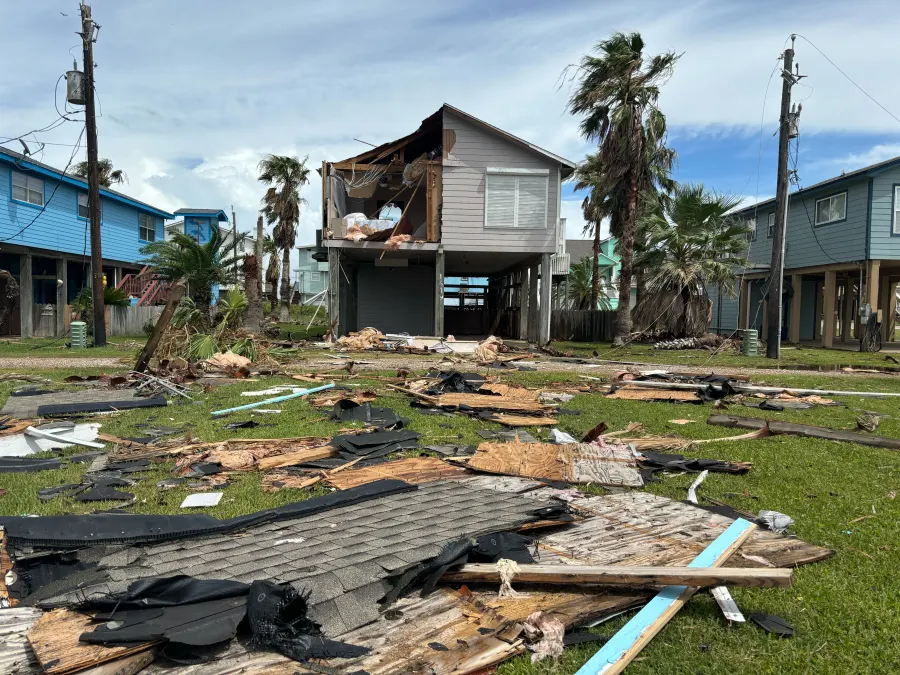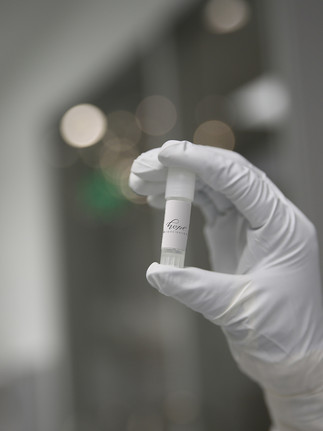On Biotech and Beryl
- Jan Shultis
- Aug 8, 2024
- 4 min read
Logistical love notes, from Hope Bio | Written by Jan Shultis
At Hope Biosciences, our love language is stewardship (cliché, perhaps, but true!). Some days that stewardship is grittier than others, like it was earlier this summer, when Hurricane Beryl blasted through Houston. A Category 1 hurricane, the storm resulted in extreme loss of vegetation, complicating restoration of electricity after it moved through the area. Most of the business, community, and personal losses attributed to the storm resulted from lack of electricity for a mid-summer week in much of Houston, and in some geographical pockets, even longer.
The labs at Hope Biosciences opened in 2017 (click here to meet our first newborn stem cell banker). Since then, Hope has weathered (literally!) Hurricane Harvey, which brought unprecedented amounts of flooding to Houston; the COVID-19 pandemic, which altered the way we and everyone else operates seemingly overnight; the Arctic blast of 2021, during which we lost power and water for multiple days; and now, Hurricane Beryl. Beryl passed directly over Sugar Land, Texas, headquarters of Hope Biosciences, leaving us without power for five days. While we are pleased to share that our people, our facility, and your banked stem cells are doing just fine, Beryl begs obvious questions – what happens at Hope during natural disasters? How do we keep your cells safe?
People, facility, cells

Hope Biosciences is a human-centric company, which means we use real people, not artificial intelligence or electronic hands, to ensure the security of your cells. Our teams are local and agile. While many team members live within walking distance of our labs, in case of a known incoming event, such as a hurricane, we station additional team members in the hotel across the street from the labs. From there they can provide a first-hand account of the facility itself, and immediately assess the grounds when it is safe to do so. (Click here for a look into how personally we take cell care).
Hope’s location and building was carefully selected. We know that Houston is prone to flooding, so we chose a location out of a flood area, and a building with multiple stories — we have never needed to, even in Hurricane Harvey or the most recent Beryl, but do have the option of simply taking the cell banks upstairs to higher ground, or transporting them in advance to another location entirely. We imagine an evolved future in which all banked cells are stored in at least two widely dispersed locations, for an even higher level of safeguarding.
The cells themselves are housed in liquid nitrogen, which means our ability to keep them super frozen is independent of the electrical grid. When needed, such as during a hurricane, the team switches from electronic to manual monitoring of the temperature of the cell banks. Why nitrogen? A medical-grade deep freezer cools to approximately -130 F (-90 C), but liquid nitrogen can go as low as -320 F (-196 C). Choosing liquid nitrogen instead of a deep freezer, like some companies do, is part of what helps Hope achieve an unprecedented five-day viability window for our cells. That lengthened window in turn creates ability to ship fresh stem cell treatments to parts of the country and world far from our headquarters.
Operational impact of natural disasters
Because Hope Bio manufactures fresh treatments and those treatments have a viability window, we do lose treatments in the process of culturing for administration to patients, if we lose power for a sustained period of time. Laboratory managers hit the ground immediately (in the case of Beryl, less than 20 minutes after power was restored) to assess losses and develop a time table for culturing new treatments. We keep substantial inventory of lab equipment, intended to mitigate any disruptions to the supply chain. The financial impact of recreating treatments can be substantial; that cost is born by Hope Biosciences and not passed to patients.

While Hope Bio can quickly manufacture new treatments for patients in need, the ability to get those treatments to patients can be affected by natural disasters. For patients outside of driving distance, over land mail can be dramatically slowed. At local organizations conducting FDA-authorized research, it can take a bit to get a disrupted trial back online, depending on the duration of the interruption (click here to read more from Hope Biosciences Research Foundation, where a great deal of work involving our cells is conducted). While such delays are frustrating, ultimately recovery does happen, so we stay focused on production and tackle each challenge as it comes. Luckily, our cells are at work in diverse settings. As was the case during Hurricane Beryl, while some hospital and university settings are likewise affected, others are not.
Key take-away:
We believe stewardship can be synonymous with “preparedness” and “responsiveness,” especially in circumstances such as natural disasters. It is a privilege to care for your cells in any and all circumstances, and we are pleased by the way our team, facility, and technology met this most recent challenge. We hope one of our most oft-repeated promises – “peace of mind, guaranteed” – feels that much more personal. May your own recovery efforts be smooth.
Hope Biosciences is a biopharmaceutical company developing adult stem cell therapeutics for a variety of clinical indications, and the only clinical grade adult stem cell banking facility in the nation serving both adults and newborns. Hope Biosciences occupies a unique position in the regenerative medicine space, noteworthy both for patented cell culture methods and effectiveness getting cells to patients through robust collaboration with academic and clinical research organizations. Hope Bio’s proprietary cell culturing process makes Hope Biosciences the gold standard in producing high volume, consistent, repeatable mesenchymal stem cells for clinical purposes. Hope Bio prides itself on banking for actual use.















I've been attempting to expand my wine business in my hometown in White Plains. For the past 7 years I do play the lottery in my spare time, but on this blessed day I came across an article about Lord Meduza's spell to win the lottery. I contacted Lord Meduza to see if it would work and after I agreed to his terms and conditions for completing the task for me, he performed his magical powers for me and within 48 hours, he provided me with the numbers I needed to play the lottery and I followed his directions. I found out at the store that I was the winner of a $105 million jackpot. For a moment I felt…
Good day everyone, some statements people make may appear unbelievable, yet they reflect their truth due to their personal experiences. I'm a truck driver and I enjoy playing the lottery, but it's been 8 years without winning anything significant. I became upset over this and chose to seek help online from anyone skilled in using spells to win the lottery since my grandma had faith in spells and a story about Lord Meduza spells drew my interest. I obtained his contact information, and we discussed all aspects of how he could assist me. In less than 72 hours, Lord Meduza provided me with the lottery numbers I required after he completed the spell for me. I purchased my ticket online…